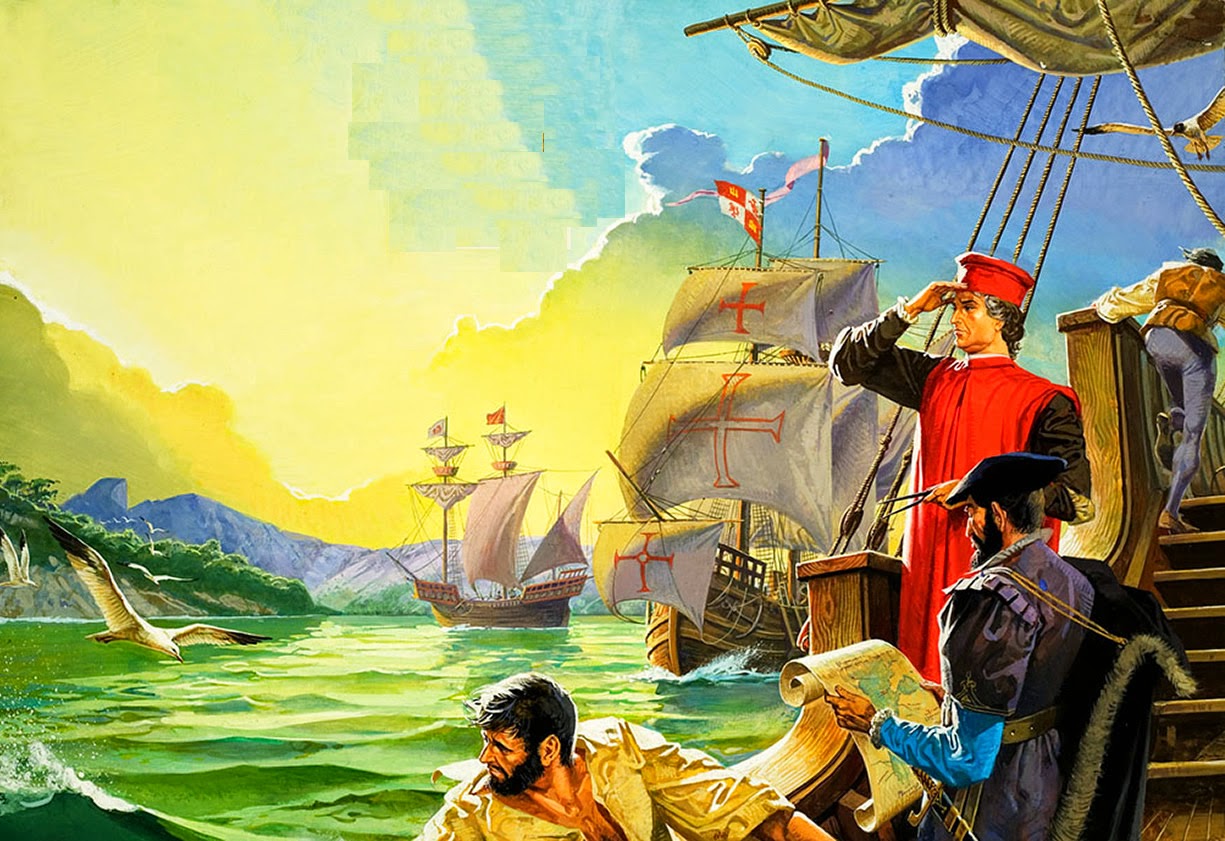 |
| Amerigo Vespucci - Florentine Explorer |
During that same year, a Latinized version of Vespucci’s given name—America—was applied to these lands for the first time in a map published by an obscure French clergyman named Martin Waldseemüller in his collection of documents titled Cosmographiae introductio. Thus an explorer not involved in the initial discovery of the lands of the Western Hemisphere had the singular distinction of having two continents bear his name.
His career as an explorer and cosmographer was actually Vespucci’s second, as he had built his fortune as a merchant and agent for the Medici interests in Italy. Launching his second career in 1499 at the age of 45, Vespucci joined the expedition of Spanish navigators Alonso de Ojeda and Peralonso Niño in 1499 in their exploration of the coasts of northern South America. By prior agreement, Vespucci separated from Ojeda and Niño and sailed south, exploring the mouth of the Amazon as well as various Caribbean islands.
  |
In 1500, he returned to Spain and in 1501 switched patrons. He served under King Manuel of Portugal when he explored nearly 10,000 kilometers of the southern coastline of South America and made many discoveries, including the Rio de Janeiro in Brazil. Sailing as far south as 50 degrees south latitude, south of the mouth of the Río de la Plata, Vespucci kept detailed notes, revisions of which were published in 1507.
 |
| Amerigo Vespucci Sighting America |
As did other explorers of his day Vespucci emphasized the most extraordinary and titillating features of the natives he encountered, describing them as perpetually naked (“just as they spring from their mother’s wombs so they go until death”), sexually promiscuous (“they marry as many wives as they please; and son cohabits with mother, brother with sister, male cousin with female, and any man with the first woman he meets”), without property of any kind (“neither do they have goods of their own, but all things are held in common”), without religion (“they have no church, no religion”), and horribly deformed by “unwonted and monstrous” ornamentation on their bodies and faces.
In addition to his discoveries and publications, Vespucci was a pioneer in the art and science of cosmology, developing a method for computing nearly exact longitude (which up until then had been determined by dead reckoning). He also calculated the circumference of the Earth to within 80 kilometers of its actual dimensions.
 |
| Voyage of Amerigo Vespucci |
For centuries, most scholars discounted Vespucci’s accomplishments as secondary and derivative, a perception that was only corrected with the work of Italian scholar Alberto Magnaghi in the 1920s and 1930s. Vespucci died in 1512 at age 58, from malaria contracted during his explorations.
EmoticonEmoticon